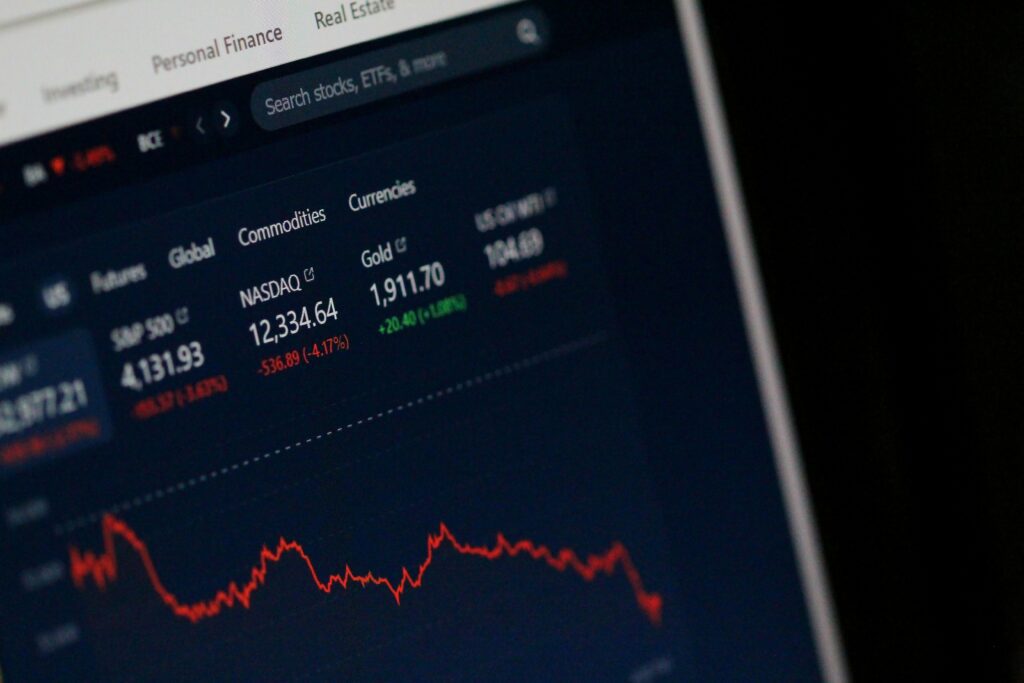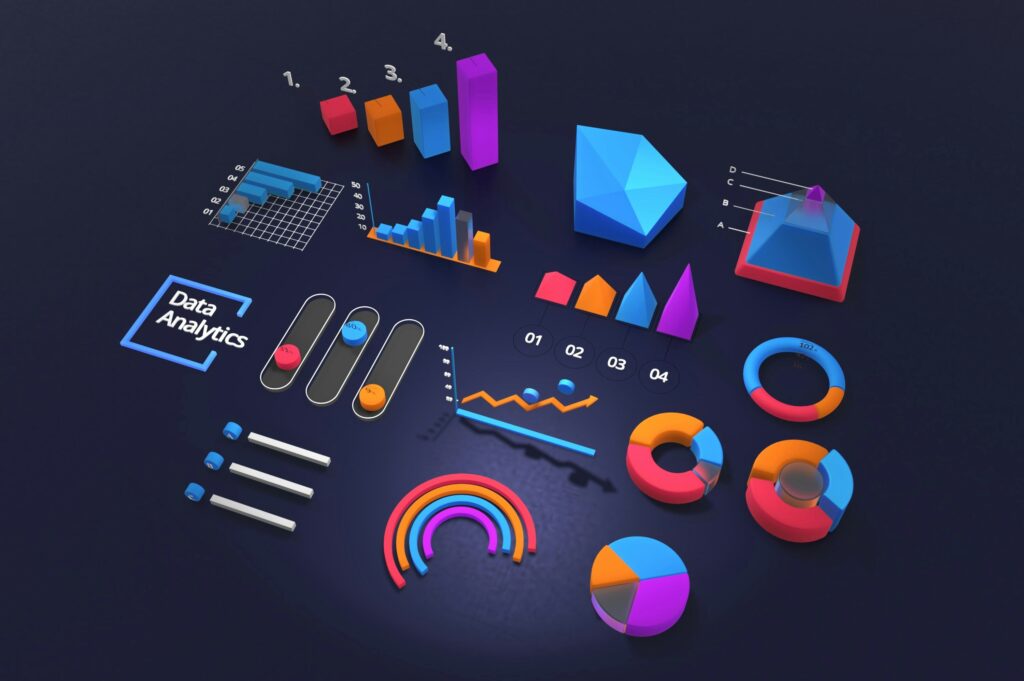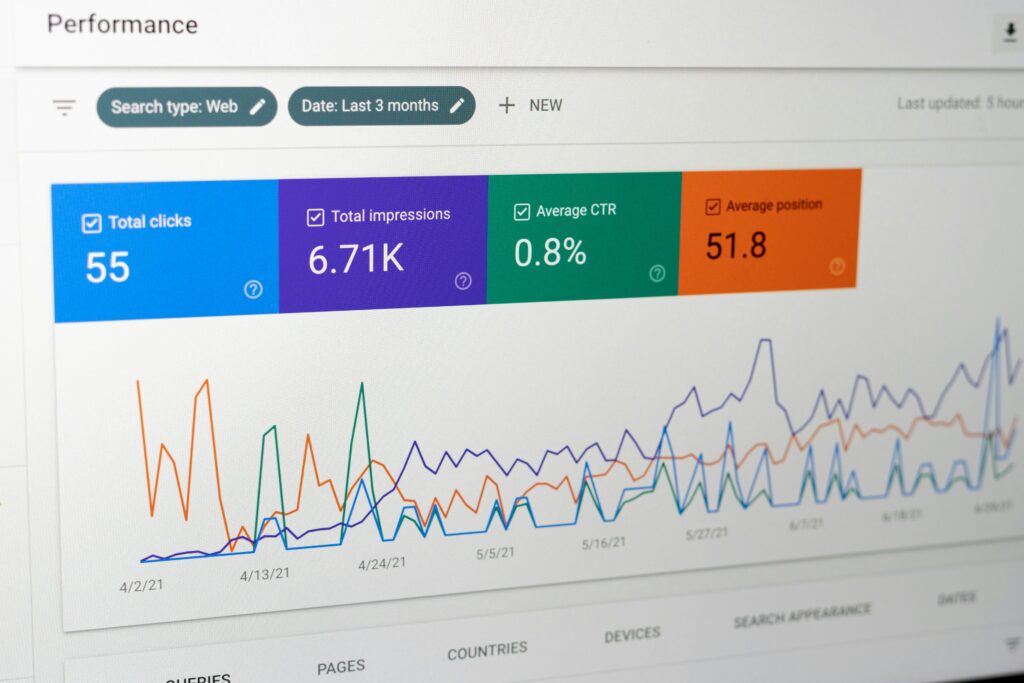
Introduction: Malaysia’s Digital Marketing Boom
Malaysia’s digital marketing industry has reached unprecedented heights in 2025, with the sector generating RM66.22 billion in just the first half of the year—surpassing the entire 2023 full-year investment of RM46.2 billion. This explosive growth reflects the country’s rapid digital transformation and presents both opportunities and challenges for businesses operating in this dynamic landscape.
Understanding these statistics isn’t just about numbers—it’s about recognizing the fundamental shifts in consumer behavior, technology adoption, and business strategy that are reshaping Malaysia’s economic future. For digital marketing agencies, businesses, and investors, these insights provide crucial intelligence for strategic planning and resource allocation in 2025 and beyond.

Overall Market Performance and Growth
Record-Breaking Revenue Figures
The digital marketing industry’s performance in Malaysia has defied expectations, with first-half 2025 revenues exceeding previous full-year totals by 43%. This growth trajectory indicates not just recovery from economic uncertainties, but a fundamental acceleration in digital adoption across all business sectors.
The growth rate represents one of the fastest expansions in Southeast Asia’s digital marketing landscape, positioning Malaysia as a regional leader in digital innovation and adoption. This performance has attracted international attention and investment, further fueling the sector’s expansion.
Comparative Analysis with Previous Years
2023 Full Year: RM46.2 billion total digital marketing investment 2024 Growth: Estimated 35% increase from 2023 levels 2025 H1: RM66.22 billion (43% above 2023 full year) 2025 Projected Full Year: RM120+ billion based on current trajectory
This exponential growth pattern indicates a mature market that’s still expanding rapidly, driven by increased business digitalization and consumer digital adoption across all demographics.

Economic Impact and GDP Contribution
Malaysia’s digital economy is projected to surpass 25.5% of GDP in 2025, with digital marketing representing a significant portion of this contribution. The sector’s growth is creating substantial employment opportunities and driving innovation across traditional industries.
The multiplier effect of digital marketing investment extends beyond direct spending, influencing e-commerce growth, technology adoption, and digital skills development throughout the Malaysian economy.
Platform-Specific Statistics and Trends
Social Media Platform Performance
Facebook and Instagram: Maintaining dominant positions with combined reach exceeding 28 million Malaysian users, representing strong engagement across age demographics.
TikTok Explosion: Reaching 19.3 million users aged 18+ in Malaysia, with TikTok Shop showing 8% growth in 2024 and accelerating adoption in 2025.
LinkedIn Professional Growth: B2B marketing investment increasing 45% year-over-year as businesses recognize professional network value.
YouTube Consistency: Maintaining steady growth with enhanced shopping features and creator monetization driving business investment.
Search Engine Marketing Trends
Google Dominance: Maintaining 83.5% market share across platforms, with increased investment in AI-powered advertising features.
Voice Search Growth: 40% of Malaysian smartphone users regularly using voice search, creating new optimization opportunities.
Local Search Importance: 78% of local searches resulting in store visits within 24 hours, emphasizing local SEO importance.
E-commerce Integration Statistics
Social Commerce Boom: Social media-driven sales accounting for 35% of total e-commerce revenue in Malaysia.
Mobile Commerce Dominance: 97.4% of internet users accessing platforms via mobile devices, with mobile commerce representing 68% of total online transactions.
Cross-Platform Shopping: Average Malaysian consumers using 3.2 different platforms for product research before purchasing.
Consumer Behavior and Demographics
Digital Adoption Across Age Groups
Gen Z (18-24): 99% digital platform engagement, averaging 4.8 hours daily on social media with highest conversion rates through video content.
Millennials (25-39): 95% active digital users, representing the highest spending power demographic with preference for authentic brand communication.
Gen X (40-54): 78% regular digital platform usage, showing fastest growth rate in digital adoption and increasing e-commerce participation.
Baby Boomers (55+): 52% digital engagement, with surprising growth in video content consumption and online shopping adoption.

Device Usage Patterns
Smartphone Primacy: 97.4% of users accessing internet via mobile devices, with average screen time of 3.8 hours daily.
Multi-Device Behavior: 73% of users regularly switching between mobile and desktop for different activities throughout purchase journeys.
Tablet Renaissance: 28% increase in tablet usage for content consumption, particularly video and e-commerce browsing.
Content Consumption Preferences
Video Content Dominance: 89% of users preferring video content over text, with short-form video showing highest engagement rates.
Interactive Content Growth: 67% increase in engagement with polls, quizzes, and interactive posts compared to static content.
User-Generated Content Trust: 84% of consumers trusting peer recommendations and user-generated content over brand-created content.
Investment Patterns and Budget Allocation
Industry Sector Breakdown
Retail and E-commerce: 34% of total digital marketing investment, driven by social commerce and mobile optimization needs.
Financial Services: 18% investment share, focusing on digital banking promotion and fintech adoption campaigns.
Technology and Telecommunications: 15% of market investment, emphasizing 5G adoption and digital infrastructure services.
Healthcare and Wellness: 12% investment growth, accelerated by telemedicine adoption and health app promotion.
Real Estate: 11% market share, driven by virtual property tours and online property marketplace growth.

Channel Investment Distribution
Social Media Advertising: 42% of total digital marketing budgets, with TikTok and Instagram receiving largest allocation increases.
Search Engine Marketing: 28% of investment, split between organic SEO (18%) and paid search advertising (10%).
Content Marketing: 15% of budgets, focusing on video production and influencer collaborations.
Email Marketing: 8% allocation, showing surprising resilience and ROI improvements through personalization.
Display and Programmatic: 7% of investment, concentrated in premium placements and retargeting campaigns.
Company Size Investment Patterns
Large Enterprises (500+ employees): Average annual digital marketing investment of RM2.8 million, focusing on omnichannel strategies.
Medium Businesses (50-499 employees): Average investment of RM450,000 annually, prioritizing social media and local SEO.
Small Businesses (10-49 employees): Average spending of RM85,000 yearly, concentrating on social media and Google My Business optimization.
Micro Businesses (1-9 employees): Average investment of RM18,000 annually, focusing on organic social media and basic website optimization.
Technology Adoption and Innovation
Artificial Intelligence Integration
AI Tool Adoption: 67% of Malaysian businesses using some form of AI in their digital marketing efforts, representing 156% growth from 2023.
Chatbot Implementation: 45% of businesses deploying customer service chatbots, with 78% reporting improved customer satisfaction.
Predictive Analytics: 32% of companies using AI for customer behavior prediction and campaign optimization.
Content Generation: 29% of businesses experimenting with AI-powered content creation, though human oversight remains essential.
Marketing Automation Growth
Email Automation: 71% of businesses implementing automated email marketing sequences, showing 43% improvement in conversion rates.
Social Media Scheduling: 84% of active businesses using social media automation tools for content publishing and engagement.
Lead Nurturing Systems: 56% of B2B companies implementing automated lead nurturing processes with measurable ROI improvements.
Emerging Technology Adoption
Augmented Reality Marketing: 23% of retail businesses experimenting with AR features for product visualization and customer engagement.
Voice Search Optimization: 38% of businesses optimizing content for voice search queries, anticipating continued growth.
Blockchain Integration: 12% of companies exploring blockchain applications for customer data security and digital asset marketing.
Regional Performance Variations
Klang Valley Dominance
Investment Concentration: 58% of total digital marketing investment concentrated in Klang Valley region, reflecting business headquarters and urban market density.
Agency Ecosystem: 72% of digital marketing agencies based in Kuala Lumpur and Selangor, creating competitive service environment.
Talent Pool: 64% of digital marketing professionals working in Klang Valley, though remote work is increasing geographic distribution.
Emerging Regional Markets
Johor Growth: 23% increase in digital marketing investment, driven by Singapore proximity and manufacturing sector digitalization.
Penang Technology Hub: 19% growth in tech-focused digital marketing, leveraging the state’s technology industry concentration.
Sabah and Sarawak Development: 31% combined growth in East Malaysia, though from smaller base, showing significant potential.
Rural Digital Adoption
Connectivity Improvements: 87% of rural areas now have reliable internet access, enabling digital marketing reach to previously underserved populations.
Local Business Digitalization: 45% of rural businesses establishing digital presence, creating new opportunities for digital marketing services.
Government Support: RM550 million in government grants supporting rural digital transformation and startup development.
Industry Performance Benchmarks

Return on Investment (ROI) Metrics
Average Digital Marketing ROI: 4.2:1 return on investment across all channels and business sizes in Malaysia.
Social Media ROI: 3.8:1 average return, with TikTok showing highest performance at 5.1:1 for businesses under 5 years old.
Search Engine Marketing ROI: 4.7:1 average return, with local SEO delivering 6.2:1 for location-based businesses.
Email Marketing ROI: 6.8:1 average return, maintaining position as highest-ROI digital marketing channel.
Content Marketing ROI: 3.2:1 average return, with video content delivering 4.1:1 and blog content achieving 2.8:1.
Conversion Rate Standards
E-commerce Average: 2.8% conversion rate across all device types and traffic sources.
Social Media Traffic: 1.9% average conversion rate, with Instagram traffic converting at 2.3% and TikTok at 1.7%.
Search Traffic Conversion: 4.1% average conversion rate for organic search traffic, 3.2% for paid search.
Email Traffic: 6.7% average conversion rate for email marketing traffic, highest among all channels.
Customer Acquisition Costs
Social Media CAC: RM47 average customer acquisition cost across social platforms.
Search Marketing CAC: RM62 average cost for search-acquired customers.
Content Marketing CAC: RM34 average cost for content-driven customer acquisition.
Email Marketing CAC: RM12 average cost for email-acquired customers.
Challenges and Opportunities Analysis
Market Saturation Concerns
Increased Competition: 43% increase in active digital marketing agencies, creating pricing pressure and service differentiation needs.
Platform Costs Rising: Average advertising costs increasing 23% year-over-year across major platforms.
Talent Shortage: 67% of agencies reporting difficulty finding qualified digital marketing professionals.
Client Education Needs: 54% of businesses requiring significant education about digital marketing strategy and implementation.
Emerging Opportunities
AI Integration Services: Growing demand for AI implementation consulting and strategy development.
Privacy-First Marketing: Increasing need for compliance-focused marketing strategies as privacy regulations evolve.
Sustainable Marketing: 38% of consumers preferring brands with demonstrated environmental responsibility, creating new positioning opportunities.
Cross-Border Commerce: ASEAN economic integration creating opportunities for regional digital marketing expansion.
Technology Disruption Impact
Cookie Deprecation Preparation: Businesses investing in first-party data collection and alternative tracking methods.
iOS Privacy Changes: 34% reduction in Facebook advertising effectiveness requiring strategy adaptations.
Voice Search Evolution: Growing need for voice search optimization as smart speaker adoption increases.
Virtual Reality Emergence: Early adoption opportunities in VR marketing for forward-thinking businesses.
Future Projections and Trends
2025 Second Half Predictions
Continued Growth: Industry expected to reach RM125-130 billion full-year total based on current trajectory.
AI Acceleration: AI tool adoption projected to reach 85% of businesses by end of 2025.
Social Commerce Expansion: Social media-driven sales expected to account for 45% of e-commerce revenue by year-end.
Local Business Digitalization: Rural and small business digital adoption projected to increase 40% in second half.
2026-2027 Outlook
Market Maturation: Growth rate expected to moderate to 25-30% annually as market matures.
Consolidation Phase: Anticipated merger and acquisition activity among smaller agencies and service providers.
Specialization Increase: Growing demand for specialized services in AI implementation, privacy compliance, and cross-border marketing.
Regulation Development: Expected introduction of specific digital marketing and data privacy regulations affecting industry operations.
Long-Term Strategic Implications
Competitive Landscape Evolution: Market leaders likely to be those combining AI capabilities with human creativity and strategic thinking.
Skill Requirements Shift: Industry professionals needing to develop AI literacy alongside traditional marketing expertise.
Client Sophistication: Businesses becoming more knowledgeable about digital marketing, demanding higher-level strategic consulting.
Technology Integration: Successful agencies requiring comprehensive technology stacks and integration capabilities.
Actionable Insights for Businesses
Investment Strategy Recommendations
Budget Allocation Optimization: Based on performance data, businesses should allocate 60% of budgets to proven channels while reserving 40% for emerging opportunities.
Technology Investment Priority: AI tools and automation platforms showing strongest ROI potential for businesses of all sizes.
Talent Development Focus: Investing in team training and capability development essential for maintaining competitive advantages.
Performance Measurement Systems: Implementing comprehensive analytics and attribution systems critical for optimization and growth.
Competitive Positioning Strategies
Differentiation Through Specialization: Businesses achieving success by focusing on specific industries, technologies, or market segments.
Value-Based Pricing: Moving beyond hourly billing to value-based pricing models reflecting business impact and results.
Partnership Development: Strategic partnerships with technology providers and complementary service businesses driving growth.
Thought Leadership Investment: Content marketing and industry expertise development creating competitive advantages and premium pricing opportunities.
Conclusion: Navigating Malaysia’s Digital Marketing Future
Malaysia’s digital marketing industry statistics for 2025 reveal a sector in rapid transformation, driven by technological innovation, changing consumer behavior, and economic growth. The RM66 billion first-half performance indicates not just current success, but sustainable growth potential that positions Malaysia as a regional digital marketing leader.
For businesses operating in this space, these statistics provide both validation of the sector’s importance and guidance for strategic decision-making. The data shows clear opportunities for growth, while also highlighting the challenges of increased competition and rising costs that require strategic responses.
Success in Malaysia’s digital marketing landscape requires understanding these statistical trends while maintaining focus on fundamental business principles: delivering value to clients, staying current with technology developments, and building sustainable competitive advantages through expertise and innovation.
The businesses that will thrive are those that use these insights to make informed strategic decisions while remaining agile enough to adapt as the landscape continues evolving. The statistics show tremendous opportunity, but success will depend on execution, innovation, and the ability to help clients navigate an increasingly complex digital environment.
Ready to leverage these industry insights for your business growth? Contact Croco-Byte Digital Marketing Agency for strategic consultation on optimizing your digital marketing investment based on current market data and trends.